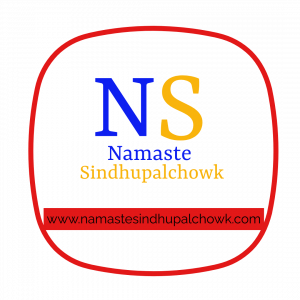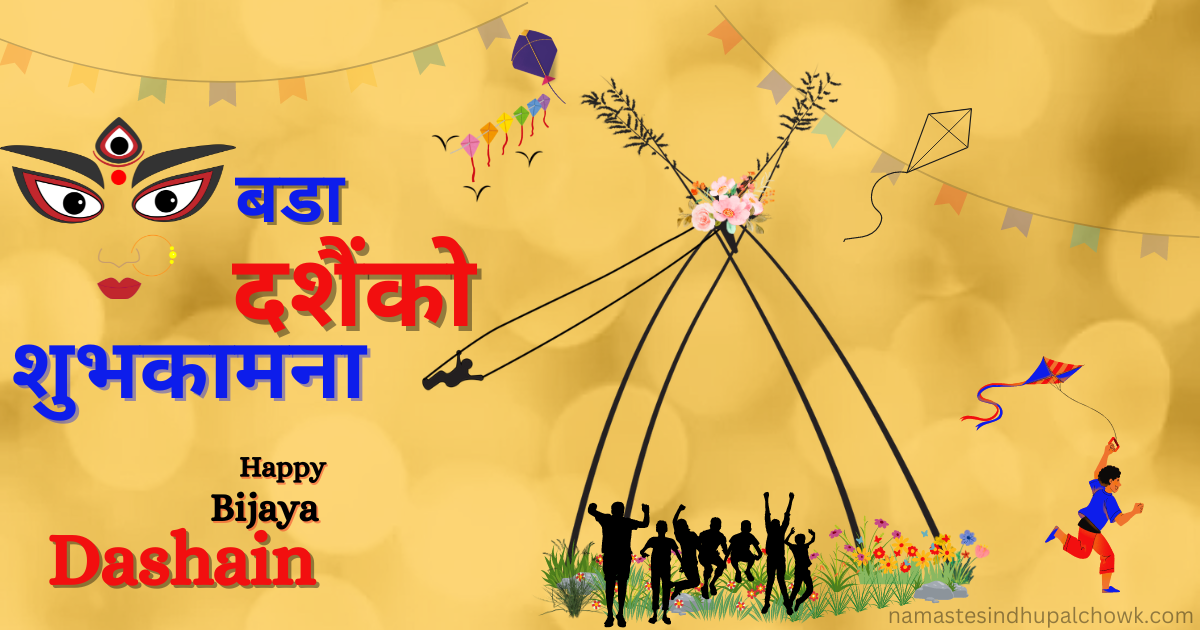No, Nepal was not a part of India. Nepal has always been its own boss Nepal has always been its own boss. They are next to each other and have much in common, but they are not in the same place. Nepal has always been its own boss, never ruled by any other country. Nepal has its own constitution, laws, and governance system. Since its inception, Nepal has been an independent and sovereign nation. Nepal became a member of the United Nations on December 15, 1955. Nepal has been doing its own separate heritage, history, revolution, governance, system, time, etc.
Nepal and India share similarities in religion, culture, language, etc. Nepal and India have had good cultural, political, and diplomatic relations in the past. Occasionally, there are disputes between the two countries on various issues. It is said that there is a relationship between Nepal and India. This means that there is a cross-border marriage between the citizens of Nepal and India. According to the Nepal-India Peace and Friendship Treaty of 1950, Nepal and India should respect each other's citizens as citizens of their own country. Therefore, according to Article 1 of the Treaty, “There shall be everlasting peace and friendship between the Government of India and the Government of Nepal. The two Governments agree mutually to acknowledge and respect the complete sovereignty, territorial integrity, and independence of each other."
Here are some reasons that Nepal was not part of India.
Nepal is the oldest country in South Asia
Nepal as a nation has a long and rich history. It was officially unified as a single kingdom in the 18th century by King Prithvi Narayan Shah, who is considered the founder of modern Nepal. The exact date of Nepal's unification is typically recognized as 1768 when Kathmandu Valley was conquered. So, in terms of its modern political identity, Nepal is over 250 years old. Nepal is the oldest independent sovereign country in South Asia.
Nepal-India open border
Nepal and India have a special agreement where they don't have strict borders like many other countries. They have open borders that allow the citizens of both countries to move freely across without needing passports or visas. This makes it easier for them to visit family, trade, work, or go on vacations in each other's countries. This open border arrangement is based on a treaty between the two nations and is a unique feature in international relations.
Due to the open border between Nepal and India, disputes are happening from time to time. Lipulekh, Limpiyadhura or Kalapani can be taken as the latest example. Similarly, there are border disputes between these countries at various places.
Where is Nepal - People, Religion, Language
Nepal is a country located in South Asia. It is situated in the Himalayas, which is a mountain range in the northern part of the Indian subcontinent. Nepal shares borders with India to the south, east, and west, and it shares a border with China (Tibet) to the north. The capital city of Nepal is Kathmandu (City of Temple). Nepal is the country of Mount Everest. It is the birthplace of Gautama Buddha. The official name of Nepal is the Federal Democratic Republic of Nepal.
Nepal is spread from 26° to 30° north latitude and 80° to 88° east longitude in the world geography. Its area is spread over 147,516 square kilometres. The average length of Nepal from east to west is about 800 km and the average width from north to south is about 200 km.
People
Nepal is a country in the mountains. People there are from different groups and have their own languages and religions. Most people are friendly and live in villages where they farm. Some live in big cities like Kathmandu. Even when things are tough, like earthquakes or problems with the government, Nepali people stay strong and help each other. Similarly, Nepal is a special place with lots of different things to see and people to meet. There are 126 different ethnic groups in Nepal.
Religion
Nepal is a secular country. People of many religious communities live here. May equal respect be given to people living in Nepal who have faith in every religion. And, it is understood that Nepal has a secular system so that everyone can believe in their religion openly. People who believe in Hinduism, Buddhism, Islam, Kirat, Christianity etc. religions are living in Nepal. Similarly, there are people who believe in Hinduism, Buddhism and Christianity in India.
Language
Nepal is a country with a multi-lingual community. According to recent data, there are people speaking 129 languages in Nepal. Mainly people speaking Nepali, Bhojpuri, Maithali, Tharu, Tamang, Newar, Magar, Dotile, Limbu, and Gurung languages in Nepal. These different languages have their own original culture and identity. Various linguistic diversity has also identified Nepal as a country with an original identity. Linguistic diversity has played a key role in preserving Nepal's independent, original identity and sovereignty since various periods of history.
National symbols of Nepal
The national symbols of Nepal according to the Constitutions of Nepal 2072 are list below.
- National Animal - Cow
- Bird - Lophophorus
- Logo - Swatik
- Flag - Two triangle flag with sun and moon
- Flower - Rhododendron
- Language - Nepali
- Color - Crimson
- Dress - Daura Shurwal and Gunyu Cholo
- Anthem - Sayaun Thunga Phulka
- Game - Volleyball
- Food - Daal, Bhat, Tarkari
UN Membership
Nepal became a member of the United Nations on December 15, 1955. For the first time, when Nepal submitted its application to become a member of the United Nations, Russia, the veto country, expressed doubt that Nepal is an independent country.
After that, Nepal submitted the letter of the Sugauli Treaty to the United Nations as proof that it is an independent sovereign nation. Only after that, Nepal got the membership of the UN. Until now, Nepal has served twice as a temporary member of the United Nations Security Council. And, Nepal has been making its security agencies participate in the peace mission of the UN.
History of Nepal
The history of Nepal is very long. It can be considered as one of the oldest and historical countries in the world. The inscriptions and historical documents found in various places here prove this point. Although it has a very old history, the proven history of Nepal is considered to be from the reign of King Mandev. From a long time ago, kings of different dynasties ruled Nepal in different eras. But we briefly understand the history from the unification of Nepal till now.
Unification Period of Nepal
Looking at the history of kings ruling in Nepal, Bhuktaman of the Gopal dynasty is considered as the first king. After that, Nepal was ruled by the Kirant dynasty, the Lichchavi dynasty, the Malla dynasty and then the Shah dynasty. What is clear from this history is that Nepal was never a part of India in history. Futhermore, It has its own governance history. In this way, while the order of rule was being transferred to different dynasties, probably around the 17th century, the current Nepal was divided into Baise and Chaubise kingdoms.
During this period of history, Prithvi Narayan Shah was born on 27th Paush 1779 BS in the Gorkha kingdom. After he became the king of Gorkhas, he launched a campaign to unify Nepal. During his time, as the nation of Nepal, he has a history of annexing the territory from Masyangdi to Teesta. During the time of Prithvi Narayan Shah, Lalitpur, Kantipur, Bhaktapur, Nuwakot, Makwanpur, Vijaypur and other areas were annexed to Nepal. Even after his death, his successors continued the work of unification of Nepal.
Anglo-Nepal War
When Prithvi Narayan Shah and his successors were unifying Nepal, British colonial rule was growing aggressively in the world. The East India Company, which entered India to trade from Britain, colonized the whole of India. Now the British wanted to make Nepal a colony too. Because if they could rule Nepal, they could easily trade with Tibet. The plan of the British to colonize Nepal and the apathy of the Nepalese is the cause of the Anglo-Nepal War.
Nepal fought bravely in the Anglo-Nepal War. Nepal fought this war under the command of Bhimsen Thapa, Bhakti Thapa and others at that time. However, Nepal could not fight the war for a long time with the British who had modern weapons and bombs. This war, which started on November 1, 1814, stopped after the Sugauli Treaty on March 4, 1816.
Sugauli Treaty
During the British-Nepal war, Nepal was not in a position to fight the war for a long time. Because Nepal was suffering from the lack of both manpower and resources to fight the war. Both sides agreed to end the war in a treaty. The Treaty of Sugauli was the treaty signed by the two sides on March 4, 1816, to end the war between the British (East India Company) and Nepal. From this treaty, Nepal lost its territory from Mechi to Teesta in the east and from Mahakali to Kagada (West).
Era of Rana Regime
As Bhimsen Thapa concentrated the power of power during the Anglo-Nepal war, in the few years after Bhimsen's death, Janga Bahadur Rana emerged more aggressively in the history of Nepal. Rana ruled Nepal for 104 years after the Kot festival of 2nd Ashoj 1903 BS.
Nepalese democracy movement
Nepal removed the Rana rule from the country on 7th Falgun, 2007. During this, an agreement was reached between Nepali Congress, Rana and Raja in New Delhi, India on 1st Falgun, 2007. According to the same agreement, the Rana rule was abolished in Nepal. India also played a big role in removing the Rana rule in Nepal. Similarly, while participating in India's independence movement, many leaders of Nepal went to jail. Thus, during the period of history, Nepal and India have been supporting each other in the struggle for power in the country.
History has witnessed the events of India playing a positive and negative role directly and indirectly in the establishment of panchayat rule, constitutional monarchy, republic, democracy, and federalism in Nepal.
History Said That
If we talk about the political, social and diplomatic history of Nepal, India is directly and indirectly connected with every political and diplomatic development of Nepal. According to experts, India has a great political influence in the establishment of peace and friendship treaty of 1950, establishment of democracy in Nepal, panchayat system, republic, democracy.
Similarly, during the promulgation of Nepal's Constitution 2072, India tried to show its intervention, but it was a matter of debate in the public sphere. In the same way, sometimes India's blockade, border disputes and other activities have caused a lot of trouble to the sovereignty of Nepal. However, in economic and commercial terms, more than 80 per cent of Nepal's trade is with India. Similarly, Nepal has a large trade deficit with India. Economically, Nepal is dependent on India. However, this may have happened because of the landlocked country.
Even if India tries to influence Nepal politically, socially, economically, directly or indirectly, the territory of Nepal is sovereign. Nepal was never merged with India, nor has it been merged. It still exists as a nation with independent rights.







